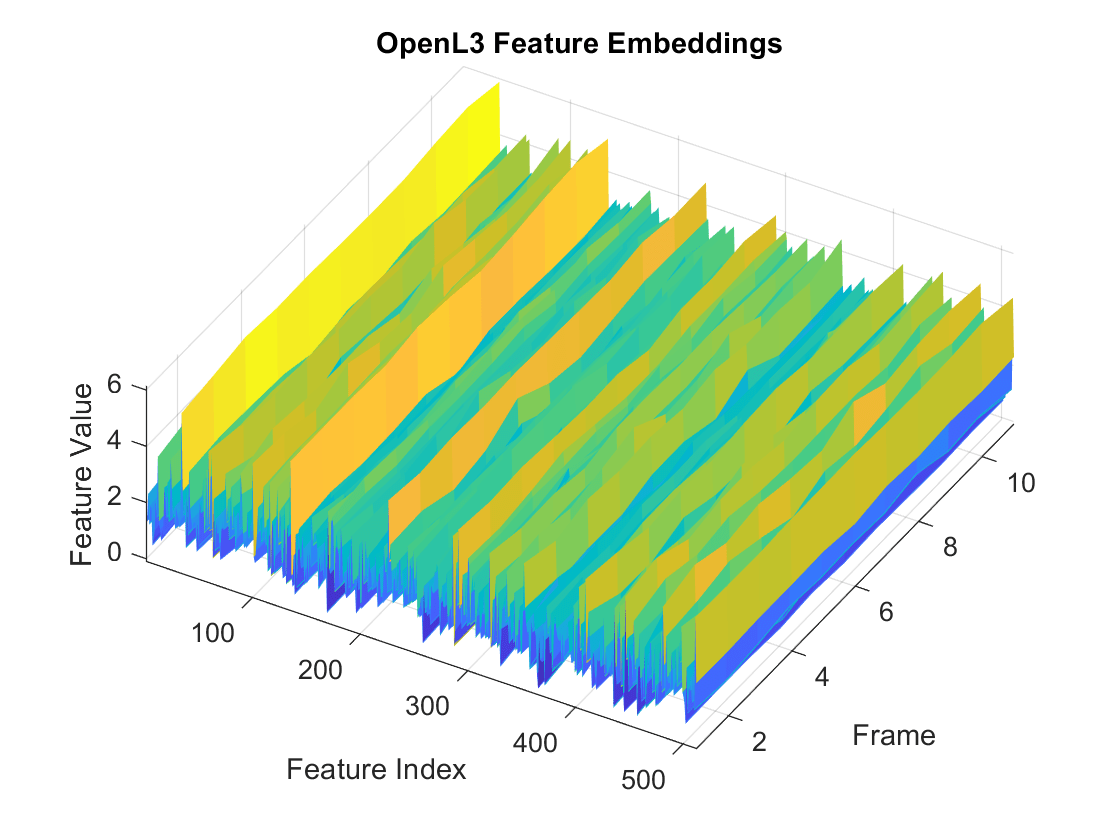openl3Embeddings
Description
embeddings = openl3Embeddings(audioIn,fs)audioIn
with sample rate fs. Columns of the input are treated as individual
channels.
embeddings = openl3Embeddings(audioIn,fs,Name=Value)embeddings
= openl3Embeddings(audioIn,fs,OverlapPercentage=75) applies a 75% overlap
between consecutive frames used to create the audio embeddings.
This function requires both Audio Toolbox™ and Deep Learning Toolbox™.
Examples
Input Arguments
Name-Value Arguments
Output Arguments
References
[1] Cramer, Jason, et al. "Look, Listen, and Learn More: Design Choices for Deep Audio Embeddings." In ICASSP 2019 IEEE International Conference on Acoustics, Speech and Signal Processing (ICASSP), IEEE, 2019, pp. 3852-56. DOI.org (Crossref), doi:/10.1109/ICASSP.2019.8682475.
Extended Capabilities
Version History
Introduced in R2022a


